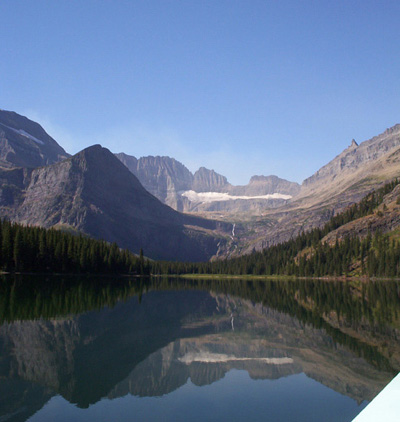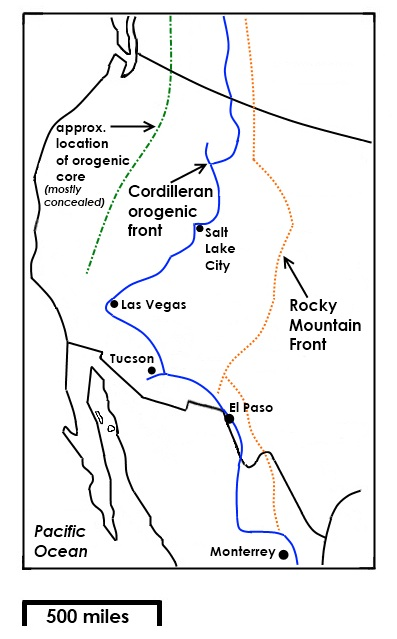|
Piikáni
The Piegan (Blackfoot: ''Piikáni'') are an Algonquian-speaking people from the North American Great Plains. They were the largest of three Blackfoot-speaking groups that made up the Blackfoot Confederacy; the Siksika and Kainai were the others. The Piegan dominated much of the northern Great Plains during the nineteenth century. After their homelands were divided by the nations of Canada and the United States of America making boundaries between them, the Piegan people were forced to sign treaties with one of those two countries, settle in reservations on one side or the other of the border, and be enrolled in one of two government-like bodies sanctioned by North American nation-states. These two successor groups are the Blackfeet Nation, a federally recognized tribe in northwestern Montana, U.S., and the Piikani Nation, a recognized " band" in Alberta, Canada. Today many Piegan live with the Blackfeet Nation with tribal headquarters in Browning, Montana. There were 32, ... [...More Info...] [...Related Items...] OR: [Wikipedia] [Google] [Baidu] |
Piikani Nation
The Piikani Nation (, formerly the Peigan Nation) ( bla, Piikáni) is a First Nation (or an Indian band as defined by the ''Indian Act''), representing the Indigenous people in Canada known as the Northern Piikani ( bla, script=Latn, Aapátohsipikáni) or simply the Peigan ( or ). History Historically speaking the Blackfoot language and members of the Blackfoot Confederacy (), the Peigan people occupied territory before the 1870s on both sides of what is now the Canada–United States border. The Blackfoot Confederacy signed several treaties with the US and received the Great Northern Reservation, an initially vast reservation in present-day Montana. However, 220 Peigans were massacred by the US Army in 1870 and American authorities pressured the Blackfoot to give up more and more lands to settlers ( were ceded in 1887), leading some Peigans to relocate to Canada and sign Treaty 7 with the Canadian government in 1877. The Peigan are now divided between the Blackfeet Nation ( or ... [...More Info...] [...Related Items...] OR: [Wikipedia] [Google] [Baidu] |
Blackfoot Confederacy
The Blackfoot Confederacy, ''Niitsitapi'' or ''Siksikaitsitapi'' (ᖹᐟᒧᐧᒣᑯ, meaning "the people" or " Blackfoot-speaking real people"), is a historic collective name for linguistically related groups that make up the Blackfoot or Blackfeet people: the ''Siksika'' ("Blackfoot"), the '' Kainai or Blood'' ("Many Chiefs"), and two sections of the Peigan or Piikani ("Splotchy Robe") – the Northern Piikani (''Aapátohsipikáni'') and the Southern Piikani (''Amskapi Piikani'' or ''Pikuni''). Broader definitions include groups such as the ''Tsúùtínà'' ( Sarcee) and ''A'aninin'' (Gros Ventre) who spoke quite different languages but allied with or joined the Blackfoot Confederacy. Historically, the member peoples of the Confederacy were nomadic bison hunters and trout fishermen, who ranged across large areas of the northern Great Plains of western North America, specifically the semi-arid shortgrass prairie ecological region. They followed the bison herds as they mig ... [...More Info...] [...Related Items...] OR: [Wikipedia] [Google] [Baidu] |
Blackfoot (other)
The Blackfoot or Blackfeet are groups of people from the Blackfoot language-speaking nations who constitute the Blackfoot Confederacy that spans Canada and the United States. Blackfoot or Blackfeet may also refer to: Places Canada * Blackfoot, Alberta * Blackfoot, British Columbia * Blackfoot diatreme, a volcanic pipe in British Columbia, Canada United States * Blackfoot, Idaho * Blackfoot, Montana * Blackfoot, Texas * Blackfoot Creek, a stream in South Dakota * Blackfoot Glacier, in Montana * Blackfoot Mountain, in Montana * Blackfoot Mountains, in Idaho * Blackfoot River (other) * Blackfoot Dam Other uses * Blackfoot language, an Algonquian language spoken by the Blackfoot people * Sihasapa, or Blackfoot Sioux, a people unrelated to the Blackfoot Confederacy * Blackfoot (band), an American rock band * Black foot disease of grapevine, a plant disease * Blackfoot, a fictional character in the ''Warriors'' novel series * J. Blackfoot (1946–2011), American so ... [...More Info...] [...Related Items...] OR: [Wikipedia] [Google] [Baidu] |
Glacier National Park (U , in Patagonia, Argentina
{{disambig ...
Glacier National Park may refer to: *Glacier National Park (Canada), in British Columbia, Canada *Glacier National Park (U.S.), in Montana, USA See also *Glacier Bay National Park, in Alaska, USA *Los Glaciares National Park Los Glaciares National Park ( es, Parque Nacional Los Glaciares) is a federal protected area in Santa Cruz Province, Argentina. The park covers an area of , making it the largest national park in the country. Established on 11 May 1937, it host ... [...More Info...] [...Related Items...] OR: [Wikipedia] [Google] [Baidu] |
George Bird Grinnell
George Bird Grinnell (September 20, 1849 – April 11, 1938) was an American anthropologist, historian, naturalist, and writer. Grinnell was born in Brooklyn, New York, and graduated from Yale University with a B.A. in 1870 and a Ph.D. in 1880. Originally specializing in zoology, he became a prominent early conservationist and student of Native American life. Grinnell has been recognized for his influence on public opinion and work on legislation to preserve the American bison. Mount Grinnell in Glacier National Park in Montana is named after Grinnell. Exploration and conservation Grinnell had extensive contact with the terrain, animals and Native Americans of the northern plains, starting with being part of the last great hunt of the Pawnee in 1872. He spent many years studying the natural history of the region. As a graduate student, he accompanied Lieutenant Colonel George Armstrong Custer’s 1874 Black Hills expedition as a naturalist. He declined a similar appointm ... [...More Info...] [...Related Items...] OR: [Wikipedia] [Google] [Baidu] |
Rocky Mountain Front
The Rocky Mountain Front is a somewhat unified geologic and ecosystem area in North America where the eastern slopes of the Rocky Mountains meet the plains. In 1983, the Bureau of Land Management called the Rocky Mountain Front "a nationally significant area because of its high wildlife, recreation, and scenic values". Conservationists Gregory Neudecker, Alison Duvall, and James Stutzman have described the Rocky Mountain Front as an area that warrants "the highest of conservation priorities" because it is largely unaltered by development and contains "unparalleled" numbers of wildlife. Defining the Rocky Mountain Front Although the Rocky Mountain Front is clearly distinct from both plains and mountains, in places like the Wyoming Basin, Montana, and New Mexico it is more ambiguous. One definition of the front is that it is a "transition zone between the Rocky Mountains and the mixed grass prairie ... hatencompasses a wide variety of wetland, riparian, grassland, and forested habita ... [...More Info...] [...Related Items...] OR: [Wikipedia] [Google] [Baidu] |
Agglutinative
In linguistics, agglutination is a morphological process in which words are formed by stringing together morphemes, each of which corresponds to a single syntactic feature. Languages that use agglutination widely are called agglutinative languages. Turkish is an example of an agglutinative language. The Turkish word ("from your houses") consists of the morphemes ''ev-ler-iniz-den,'' literally translated morpheme-by-morpheme as ''house-plural-your(plural)-from''. Agglutinative languages are often contrasted with isolating languages, in which words are monomorphemic, and fusional languages, in which words can be complex, but morphemes may correspond to multiple features. Examples of agglutinative languages Although agglutination is characteristic of certain language families, this does not mean that when several languages in a certain geographic area are all agglutinative they are necessarily related phylogenetically. In the past, this assumption led linguists to propose the s ... [...More Info...] [...Related Items...] OR: [Wikipedia] [Google] [Baidu] |
Great Lakes
The Great Lakes, also called the Great Lakes of North America, are a series of large interconnected freshwater lakes in the mid-east region of North America that connect to the Atlantic Ocean via the Saint Lawrence River. There are five lakes, which are Lake Superior, Superior, Lake Michigan, Michigan, Lake Huron, Huron, Lake Erie, Erie, and Lake Ontario, Ontario and are in general on or near the Canada–United States border. Hydrologically, lakes Lake Michigan–Huron, Michigan and Huron are a single body joined at the Straits of Mackinac. The Great Lakes Waterway enables modern travel and shipping by water among the lakes. The Great Lakes are the largest group of freshwater lakes on Earth by total area and are second-largest by total volume, containing 21% of the world's surface fresh water by volume. The total surface is , and the total volume (measured at the low water datum) is , slightly less than the volume of Lake Baikal (, 22–23% of the world's surface fresh water ... [...More Info...] [...Related Items...] OR: [Wikipedia] [Google] [Baidu] |
Saskatchewan
Saskatchewan ( ; ) is a Provinces and territories of Canada, province in Western Canada, western Canada, bordered on the west by Alberta, on the north by the Northwest Territories, on the east by Manitoba, to the northeast by Nunavut, and on the south by the United States, U.S. states of Montana and North Dakota. Saskatchewan and Alberta are the only landlocked provinces of Canada. In 2022, Saskatchewan's population was estimated at 1,205,119. Nearly 10% of Saskatchewan’s total area of is fresh water, mostly rivers, reservoirs and List of lakes in Saskatchewan, lakes. Residents primarily live in the southern prairie half of the province, while the northern half is mostly forested and sparsely populated. Roughly half live in the province's largest city Saskatoon or the provincial capital Regina, Saskatchewan, Regina. Other notable cities include Prince Albert, Saskatchewan, Prince Albert, Moose Jaw, Yorkton, Swift Current, North Battleford, Melfort, Saskatchewan, Melfort, and ... [...More Info...] [...Related Items...] OR: [Wikipedia] [Google] [Baidu] |
Buffalo Jump
A buffalo jump, or sometimes bison jump, is a cliff formation which Indigenous peoples of North America historically used to hunt and kill plains bison in mass quantities. The broader term game jump refers to a man-made jump or cliff used for hunting other game, such as reindeer. Method of the hunt Hunters herded the bison and drove them over the cliff, breaking their legs and rendering them immobile. Tribe members waiting below closed in with spears and bows to finish the kills. The Blackfoot people called the buffalo jumps "pishkun", which loosely translates as "deep blood kettle". This type of hunting was a communal event that occurred as early as 12,000 years ago. They believed that if any buffalo escaped these killings then the rest of the buffalo would learn to avoid humans, which would make hunting even harder. Buffalo jump sites are often identified by rock cairns, which were markers designating "drive lanes", by which bison would be funneled over the cliff. These d ... [...More Info...] [...Related Items...] OR: [Wikipedia] [Google] [Baidu] |







